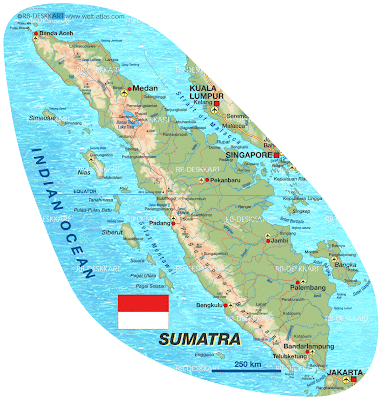 |
| Picture of Von Thunen from Wikipedia |
Von Thűnen's Rings
Geographers have long been interested in the relationship between distance to market and agricultural production. One of the earliest and best known models was developed by Johann Heinrich von Thűnen, a German land owner and geographer active in the early 19th century. Von Thűnenwas interested in why farmers decide to grow certain crops in certain places. His model, known vernacularly as "Von Thűnen's Rings", was published in his "Isolated State" in 1826. Von Thunen argued that there are three key variables that affect crop choices: land rent (or production costs), market price, and transport costs. Von Thűnen's Isolated State has several conditions:
- There is a centrally located market town...
- The land is an isotropic plane, meaning there is no topographical variation
- Farmers are rational decision makers
- Farmers are able to transport goods directly to the market.
According to Von Thűnen's calculations, there is a pretty significant distance decay for agricultural products. This causes the emergence of several discrete zones of production radiating out from the central market town. Since farmers on the isotropic plane don't need to worry about roads, these zones take the form of concentric rings, as shown in the diagram. Von Thunen's model is pretty simple and basic (and contrived), but it is instructive. Let's take a look at an example. Below I have some hypothetical production and market data. We can use this to figure out how profitable each crop will be in various locations, which is all the "rational" farmer needs to know to make his/her decision.
Milk Forest Extensive Field Crops Ranching
Market Price 180 140 105 60
Cost of Production 60 45 32 20
Transport Cost/km 25 15 8 4
Based on this data we can make some simple calculations. Milk goes bad fast and it has to be refrigerated or brought to market quickly, which contributes to its costs of production. Ranching, on the other hand, costs much less because the cows, lambs, goats, etc that you raise can transport themselves to market by walking. Let's calculate the productivity per distance. Below you can see the simple spreadsheet I made for profitability. At each distance I highlighted the most profitable crop in green. As you can see, Up to somewhere between 2-3 km, milk is the most profitable, so that's what farmers will produce. But as you move farther away from the market the crop choice changed, until finally farmers choose ranching!
Like I mentioned, this is a very basic model, and like all models it doesn't exactly demonstrate reality. But geographers through the years have demonstrated several examples that loosely correspond to Von Thűnen's rings. To the left you can see one famous example from Uruguay. But it's important to remember that Von Thűnen's model is on an isotropic plane and so topography doesn't matter and all goods are transported in the same way. The real world doesn't work like that, though. In the real world there are natural obstacles, like mountains, as well as transportation options that lower the cost of moving goods to market (think of trains and rivers). So we can modify the Von Thűnen model by adding a river. Look at the diagram below (from the Human Geography I use when I teach introductory geography). As you can see, the river changes the picture significantly.
When we start to make the model more realistic, it becomes much more useful. Have a look at the graphic I lifted from Hofstra (who lifted it from a couple of well-known geographers). On the left you see the very basic model applied to the US in the 19th century. It's not very accurate. However the second model adds climate factors, which are really important in agricultural decision making. With the addition of this consideration, the model corresponds much more closely to actual conditions.
AMBROSIA!!!
So as we've seen, one strategy for dealing with distance to market is to change crop choices. There is another strategy, though: add value. Many agricultural commodities are time-sensitive; that is, they will go bad if they aren't consumed quickly enough. This was a big problem in the frontier grain producing areas of the US in the 18th and 19th century, before the increase in western urban areas and the advent of railway and refrigeration technology. So farmers figured out that in order to make a living, they needed to add value to the grain they produced. The solution was simple: distillation. Farmers on the frontier, far from markets, started making whiskey from grain since whiskey keeps for a long time. It's also much more valuable per unit volume, and so the transport costs decrease for whiskey.
 |
| Cartoon from here. |
These pioneering whiskeymen might have been forgotten to the world if it weren't for a tax levied on corn in the form of hooch levied by the fledgling US government in the 1790s. The Pennsylvania distillers refused to pay the tax and even took up arms against the federal government. Then president George Washington raised an army and marched to Western Pennsylvania, but by the time he arrived the rebels had already dispersed. The "Whiskey Rebellion" ended up without a shot being fired, but it did demonstrate the willingness of the new nation's government to enforce its laws. It also provided an outstanding example for generations of geographers to use when discussing distance to markets.
Kerinci's Potatoes...
 |
| Picture from here |
 |
| Picture from here |
Notes
1) If you already know where I'm going with this, give yourself 10 bonus points.

























